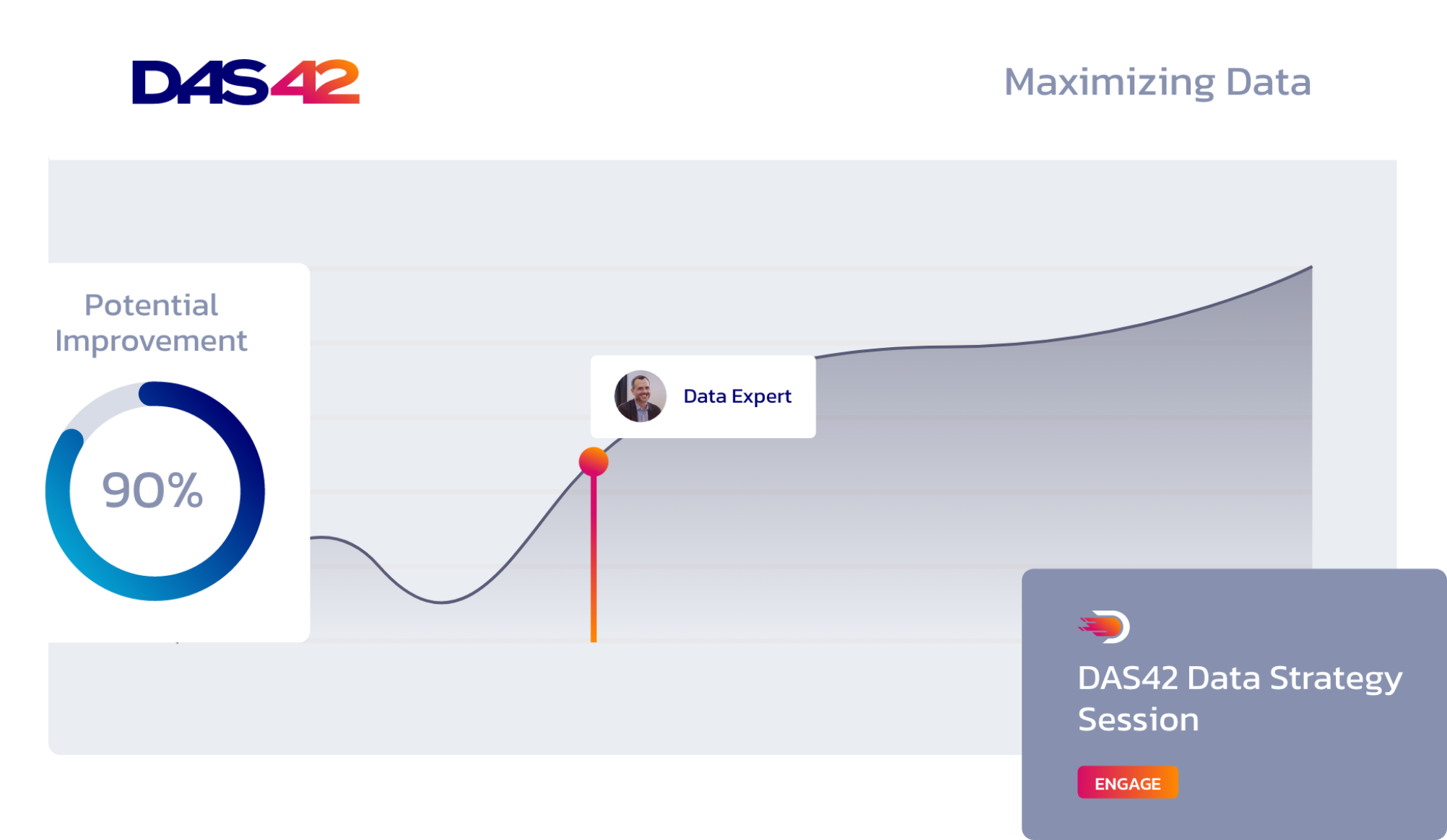There’s a lot of conversation these days around real-time analytics. And like so many other trends and buzzwords, real-time analytics has shifted to mean different things to different people. As a result, it’s become increasingly difficult for business leaders to decipher what the term actually means and whether it could benefit the way they’re using business data. But despite the confusion, there’s a growing perception of need.
At DAS42, our consultants believe that perception has resulted from the failure of most analytics technologies to deliver fast and reliable data. Driven by their frustration—at the pace of their own reporting or the (similarly questionable) speed their competitors seem to enjoy—some have chosen to upend their systems entirely to run real- or near-real-time analytics alongside their existing batch processes.
But while these capabilities can provide a powerful leg up for certain businesses, yours is quite likely one of the vast majority that stands to benefit very little, if at all, from these technologies. Before embarking on an expensive, disruptive, and potentially unnecessary system upgrade, make sure you understand the pros and cons of so-called real-time analytics. You should also be aware of the available alternatives in the marketplace.
What companies benefit from real-time analytics?
Despite the fact that “real time” as a buzzword has been twisted to prey on leaders’ data insecurities, there are actually a number of valid use cases that require instantaneous data reporting. Hotel chains, for example, can use real-time analytics to target prospects with promotions and deals as rooms become available in their markets.
Would your business benefit from real-time analytics?
Your industry may be one of the rare use cases where you would. Start by answering these questions.
These so-called high-volume transaction companies understand that their success hinges on a vastly more complex data platform architecture than most businesses are able to scale. Even for those who are up to the challenge and able to commit the necessary resources to the project, the cost in most cases is prohibitive.
The goal instead should be a mindset shift. If your company exists outside of that high transaction volume use case, you still can still expect to glean timely, actionable insights from your data. That’s something every company needs in order to continually make better decisions and achieve success. But there are many tools and methods for gathering that information without the use of real-time analytics.
3 major fallacies driving your desire for real-time analytics
Many of those seeking real-time data capabilities are driven by a fairly straightforward pain point: It’s taking too long to access the data they need to perform a time-sensitive function. Real time feels like the logical solution. Faster is always better, right? But while that’s true in theory, there are some problems with this line of thinking.
- It fails to account for data latency. In every system, there’s a data latency or lag time between when something happens and when that something shows up on a report (i.e., prompting the need to actually do something about it). For company leaders considering implementing real-time analytics, a better first step might be to decide how much latency their business can tolerate. Upon closer examination, many companies come to realize that most decisions do not need to be made in real time in order to positively impact their business.
- It’s a slippery slope. If you’re only getting updated reports once a week on critical business data and information, that could be a problem since the rapid pace of business today demands quick and decisive action. But we’ve encountered many who have become convinced that minute changes in their metrics and KPIs have enormous meaning or are actionable in some way to their business goals. We frequently remind these users that it’s dangerous to make isolated decisions based on a few data points.
- It opens the door to false equivalencies. We often meet with clients who have heard or read about the benefits real-time technologies have on other industries such as software development. Feeling inspired by that news, they begin projecting those benefits from other business segments onto their own. But the reality is the real-time capabilities being employed by software developers and the like have yet to effectively translate to the wider world of analytics.
Always consider use case before introducing new technologies
Earlier, we recommended data latency as a good place to start when rethinking your analytics needs. For an e-commerce company dealing with items going in and out of stock, that might mean taking a closer look not just at when they need their data gathered in a report or analytic, but why they need it at that time.
Once a company has determined their unique use case, they can explore data-driven applications from providers like Google and Facebook that will automatically trigger your system to turn product listing ads off when an item goes out of stock and back on when it returns. This is a prime example of a challenge that might trick you into thinking you need real-time analytics. But there are actually software applications you’re already familiar with/paying money for that do essentially the same thing.
Essentially, the debate over whether to invest in real-time analytics for your business will always boil down to use case. In our line of work, we meet many individuals who feel strongly that they need one solution or another when the truth is they don’t know what they need. And that’s understandable.
The best rule of thumb when considering making the leap to real-time analytics—or any other expensive, intensive data technology solution—is to first ask yourself: What am I actually hoping to accomplish from a business standpoint with this data? With that knowledge firmly in place, you can begin optimizing the system to work smarter, not harder, toward achieving your business goals.
Services provided









